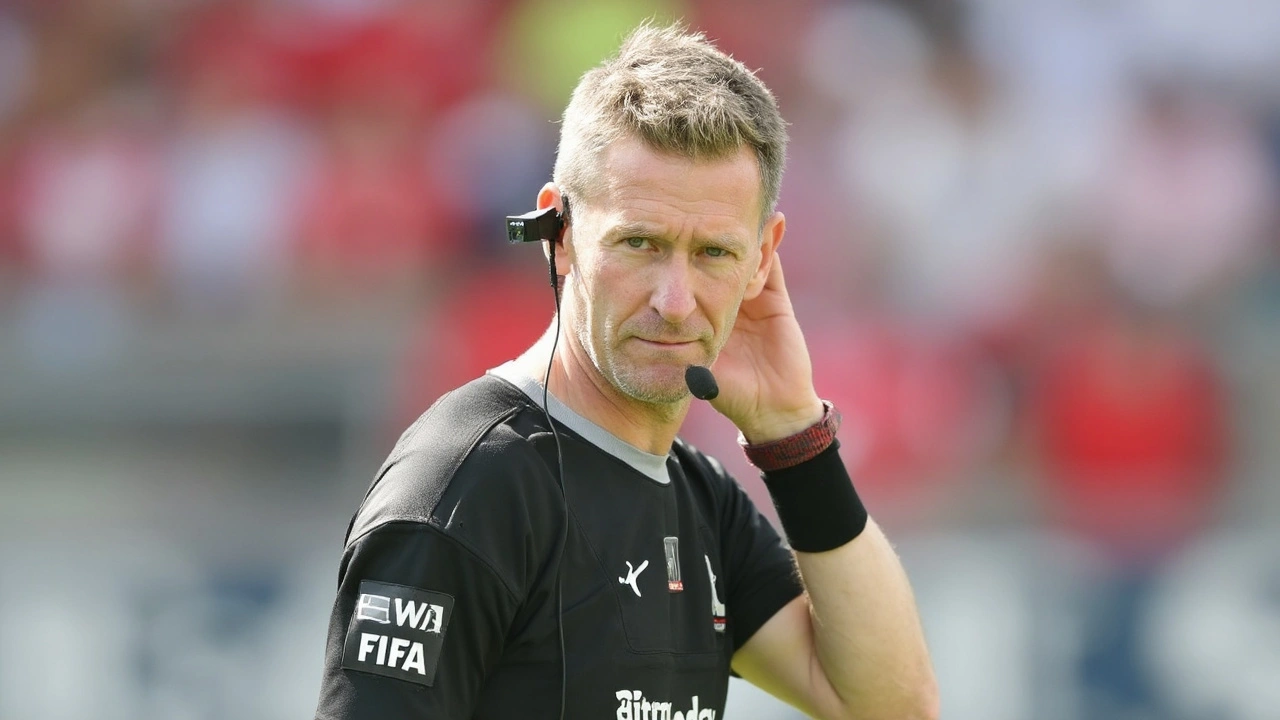FIFA Club World Cup 2025: A New Era of Football Innovations
Walk into any stadium hosting the 2025 FIFA Club World Cup and you’ll spot changes you can’t ignore. The energy hits differently, not just from bigger crowds or flashier intros, but because football’s biggest global club tournament looks and feels brand new. It’s not just the world-class teams battling it out—it’s the creative leaps off the pitch that have everyone talking.
One of the boldest moves? Referee body cameras, or ref cams, are now tucked into the kits of the match officials. With these, fans watching from home get a direct line to the high-stakes decisions made every minute. Forget guessing why a handball gets called or a penalty is overturned. Now, everyone gets to see, and almost feel, what the ref does in the heat of the action. DAZN, the broadcaster, weaves this unique perspective into live coverage, delivering pulse-racing angles and split-second insights. It's immersive, honest, and a little bit addictive—especially when controversy sparks debates across social media right after the whistle.
The fan experience doesn’t stop there. Stadiums have amped up the drama with pre-game player walk-outs. This isn’t just a procession for the cameras. It’s about fans connecting to their heroes, seeing emotion, nerves, and excitement up close, often inches away from the action in ways television never captured. It turns the players from distant stars into real people, amping up anticipation before that first kick.

Tech-Driven Transparency and Modern Gameplay
Everyone loves VAR—until they don’t. Past tournaments were filled with fans angry at decisions explained only by cryptic hand movements and scoreboard messages. This year, stadium-goers watch video reviews with the officials. Live screen footage gives everyone the same look the ref gets. The move wipes out most of the usual confusion, pulling the crowd into the heart of on-field drama. Transparency isn’t just a buzzword; it’s there in 4K on stadium screens.
Even the classic goalkeeper rulebook has gotten a shakeup. Remember the old six-second rule, the one almost everyone ignored? It’s now an eight-second rule, and it’s getting real-time enforcement. For the last five seconds, a visual countdown flashes up in the stadium, making time-wasting impossible to hide and cranking up the tension as teams try to protect the lead or launch a desperate counter. Goalkeepers caught holding on too long don’t give up a sometimes useless indirect free-kick anymore, but concede a corner. It’s a rule that stings less in some ways (nobody wants a free-kick inside their own box), but can still change a game on a dime when corners mean real threat.
These upgrades aren’t for show. They’re about making the game more accessible, fair, and exciting, both for fans glued to their screens and those lucky enough to see it all unfold in person. Whether you’re a diehard traditionalist or tech-curious newcomer, there’s no denying this version of the FIFA Club World Cup feels unlike any before it—a tournament that’s pulling football into a new era without losing its soul.


Madison Neal
Having the referee's perspective streamed live is a game‑changer, especially when you consider the sensor integration that feeds real‑time data into the broadcast pipeline. The added situational awareness not only demystifies contentious calls but also enhances fan engagement through immersive telemetry overlays. From a tactical analysis standpoint, broadcasters can now correlate referee positioning with decision patterns, which is a neat addition for the analytics community. Overall, it’s a solid step toward transparent officiating without sacrificing the drama of the game.
John Crulz
It’s fascinating how the wear‑able cams are blending high‑tech with old‑school football vibes. On one hand, you get that ultra‑clear POV that satisfies the curiosity of the modern fan; on the other, it preserves the emotional pulse that makes the sport timeless. The mix of formal presentation and relaxed commentary feels just right for a global audience, and I think it’ll set a precedent for future tournaments. All in all, it’s a balanced evolution that respects both tradition and innovation.
Anita Drake
Seeing referees’ viewpoints in real time also opens a cultural bridge, allowing fans from diverse backgrounds to share a unified understanding of the game’s intricacies. When you watch a decision unfold and hear the referee’s cadence, it humanizes the authority figure, which can resonate across different football cultures. This kind of inclusive transparency nurtures a collective appreciation and reduces the “us vs. them” mentality that sometimes surfaces after controversial calls. It’s a step forward for global fandom cohesion.
Eduardo Lopez
The introduction of player walk‑outs with such theatrical flair almost feels like a deliberate attempt to sanctify the sport beyond its pure competitive nature. While I appreciate the spectacle, we must guard against turning football into a staged performance that sidelines meritocracy. Authenticity should remain the cornerstone, and any excess in dramatization threatens to erode the genuine connection between the players and the supporters. Let’s keep the focus on skill and sportsmanship, not on glossy productions.
Nancy Perez de Lezama
Nice addition.
Matt Heitz
Honestly, the biggest win here isn’t the tech-it’s the fact that American clubs finally get a platform where they can showcase their resilience and tactical ingenuity on a world stage. Our referees, though still adapting, benefit from the same transparent lens, proving that the U.S. approach to fairness can match the global standard. The varied sentence structure mirrors the unpredictable nature of our play, with short bursts of aggression followed by strategic pauses. If we keep embracing these innovations, we’ll not only improve our own league but also set a benchmark that other nations will want to emulate.
Susan Mark
From a chilled observer’s viewpoint, the cascade of innovations introduced at the 2025 FIFA Club World Cup offers a fertile ground for both fans and analysts alike. First and foremost, the referee body cams provide an unprecedented window into decision‑making processes, allowing us to dissect the micro‑movements that lead to a flag being raised. This data, when paired with the live VAR feeds displayed on the stadium screens, creates a layered narrative that demystifies the once‑opaque adjudication process.
Secondly, the player walk‑outs, now choreographed with emotional nuance, serve not merely as spectacle but as a bridge between the athletes’ internal states and the audience’s perception. By situating the squad just inches away from the pitch, clubs foster a sense of intimacy that can boost morale, especially for younger talents looking for role models.
In terms of rule adjustments, the eight‑second goalkeeper rule, accompanied by a visual countdown, injects a tactical urgency that reshapes end‑game strategies. Teams can no longer rely on time‑wasting tactics; instead, they must optimize quick distribution or risk conceding a corner – a scenario that statistically increases the probability of a goal in the final minutes.
Moreover, the integration of high‑resolution telemetry into broadcast streams opens new avenues for performance analytics. Coaches can now reference specific frames where a referee’s line of sight intersected a potential foul, thereby refining training drills to mitigate future infractions.
For the casual viewer, these layers of transparency make the experience more engaging without overwhelming. The key is the seamless embedding of tech-fans aren’t forced to click through multiple menus; everything unfolds organically on the main feed.
From a cultural perspective, the universal accessibility of these features helps level the playing field for supporters from different regions, reducing the language barrier that often accompanies complex rule explanations. Simplified visual cues-like the countdown timer-transcend linguistic differences, fostering a shared understanding of the game’s flow.
Finally, the overall narrative remains intact: football’s soul is preserved while its presentation evolves. By marrying tradition with cutting‑edge technology, the tournament sets a precedent that other competitions will likely emulate, ensuring the sport’s relevance for years to come.